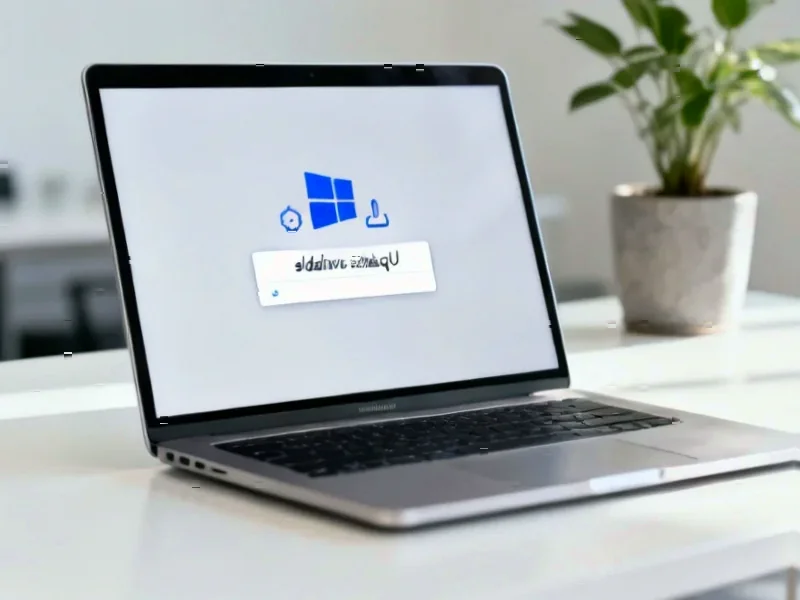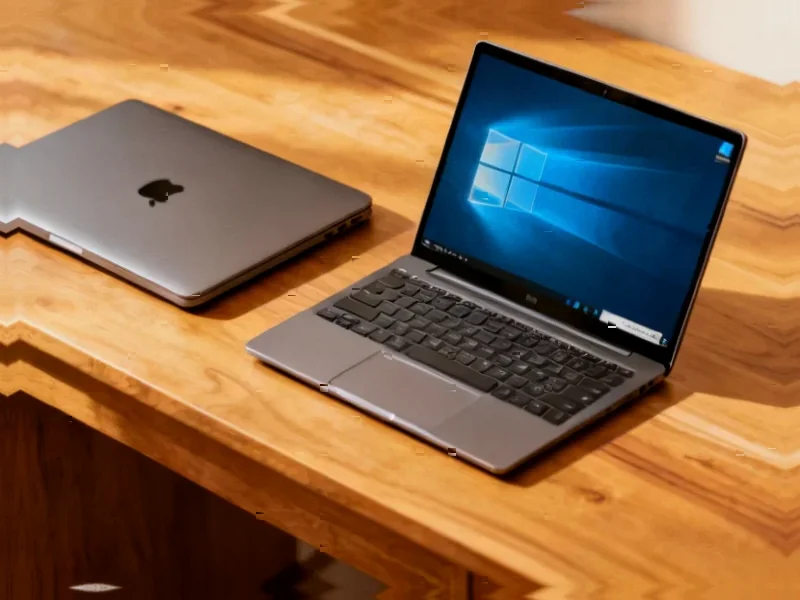According to Thurrott.com, early testing of Tiny11 Builder with Windows 11 version 25H2 shows promising results in eliminating unwanted system behaviors, including the absence of harassing notifications about OneDrive, Copilot, Windows Backup, and other Microsoft services. The customized installation successfully removed numerous in-box Windows 11 apps including Microsoft Edge, OneDrive, and Xbox, creating a minimalist experience that the tester has been using for several days without encountering the typical “enshittification” issues. While the system required additional utilities like MSEdgeRedirect to properly handle web-based items and Brave browser installation via winget, the core approach appears effective at preventing unwanted pop-ups and quiet app installations that typically undermine the Windows experience. This testing represents an ongoing evaluation of whether modified Windows installations can provide lasting relief from Microsoft’s increasingly aggressive ecosystem push.
Table of Contents
The Debloating Movement Gains Momentum
What Thurrott’s testing reveals is part of a much larger trend in the Windows ecosystem. For years, power users have sought ways to strip down Windows installations to their essential components, but we’re now seeing this movement go mainstream. The frustration with Microsoft’s increasing integration of services like OneDrive, Copilot, and various subscription nudges has reached a tipping point where third-party tools are becoming necessary for many users. This isn’t just about removing bloatware in the traditional sense—it’s about reclaiming control over an operating system that increasingly feels like it serves Microsoft’s business interests first and user preferences second.
Technical Viability and Long-Term Sustainability
The critical question that Thurrott’s preliminary testing doesn’t fully address is long-term sustainability. While tools like Tiny11 Builder can create a clean initial installation, Windows 11 is designed as a service that receives frequent updates. Microsoft’s update mechanisms have historically been aggressive about re-adding removed components or resetting user preferences. We’ve seen this pattern before with Edge reinstatement attempts and the persistent return of pop-up notifications for Microsoft services. The real test for Tiny11 Builder will come with the next major feature update, when Microsoft’s deployment systems may simply override the modifications.
Microsoft’s Ecosystem Strategy Versus User Autonomy
This tension between user customization and Microsoft’s ecosystem strategy represents a fundamental conflict in modern computing. Microsoft has increasingly positioned Windows as a gateway to its broader service ecosystem, including Xbox integration, cloud storage through OneDrive, and AI services via Copilot. From a business perspective, this makes complete sense—it creates recurring revenue streams and user lock-in. However, for users who prefer best-of-breed alternatives or simply want a cleaner computing experience, these integrations feel intrusive. Tools like Tiny11 Builder represent a market response to this tension, but they exist in a legal gray area that Microsoft could potentially challenge.
Enterprise Implications and Future Scenarios
The enterprise market represents an interesting dimension in this discussion. While individual users might embrace tools like Tiny11 Builder, corporate IT departments have more formalized methods for managing Windows deployments through Group Policies and deployment tools. However, if Microsoft continues pushing consumer-focused features into enterprise environments, we could see increased demand for similar debloating solutions in business contexts. This creates a delicate balancing act for Microsoft—how to drive service adoption without alienating the enterprise customers who represent their most reliable revenue stream. The company may need to consider more granular control options for power users rather than forcing third-party workarounds.
The Road Ahead for Windows Customization
Looking forward, the success of tools like Tiny11 Builder will likely depend on Microsoft’s response. The company could take a hardline approach and technically block these modifications, or they could recognize the market demand and build more official customization options into Windows. The latter approach would be wiser—acknowledging that different users have different needs while maintaining the integrity of their service ecosystem. As backup notifications and other service prompts become more aggressive, the pressure for solutions will only grow. Microsoft’s challenge will be finding the right balance between ecosystem growth and user autonomy before third-party solutions become too entrenched to displace.
Related Articles You May Find Interesting
- Veeco’s 2026 Orders Signal Advanced Packaging Arms Race
- Gene Editing’s Next Frontier: Curing Heart Disease at the DNA Level
- New AI Method Outsmarts Facial Spoofing Attacks
- Barclays Bets $40B on US Consumer Loans with Best Egg Acquisition
- The Bendable Brain: How Curved Nanographenes Could Revolutionize Electronics



